This post may contain affiliate links. Please see our disclosure policy for more details.
5 ingredients are all you need to make this healthy, protein and fiber-rich instant pot multigrain rice. Barley, rice, quinoa, lentils, and beans make this hearty side dish a great way to add variety to your baby, child, and adult’s diet!
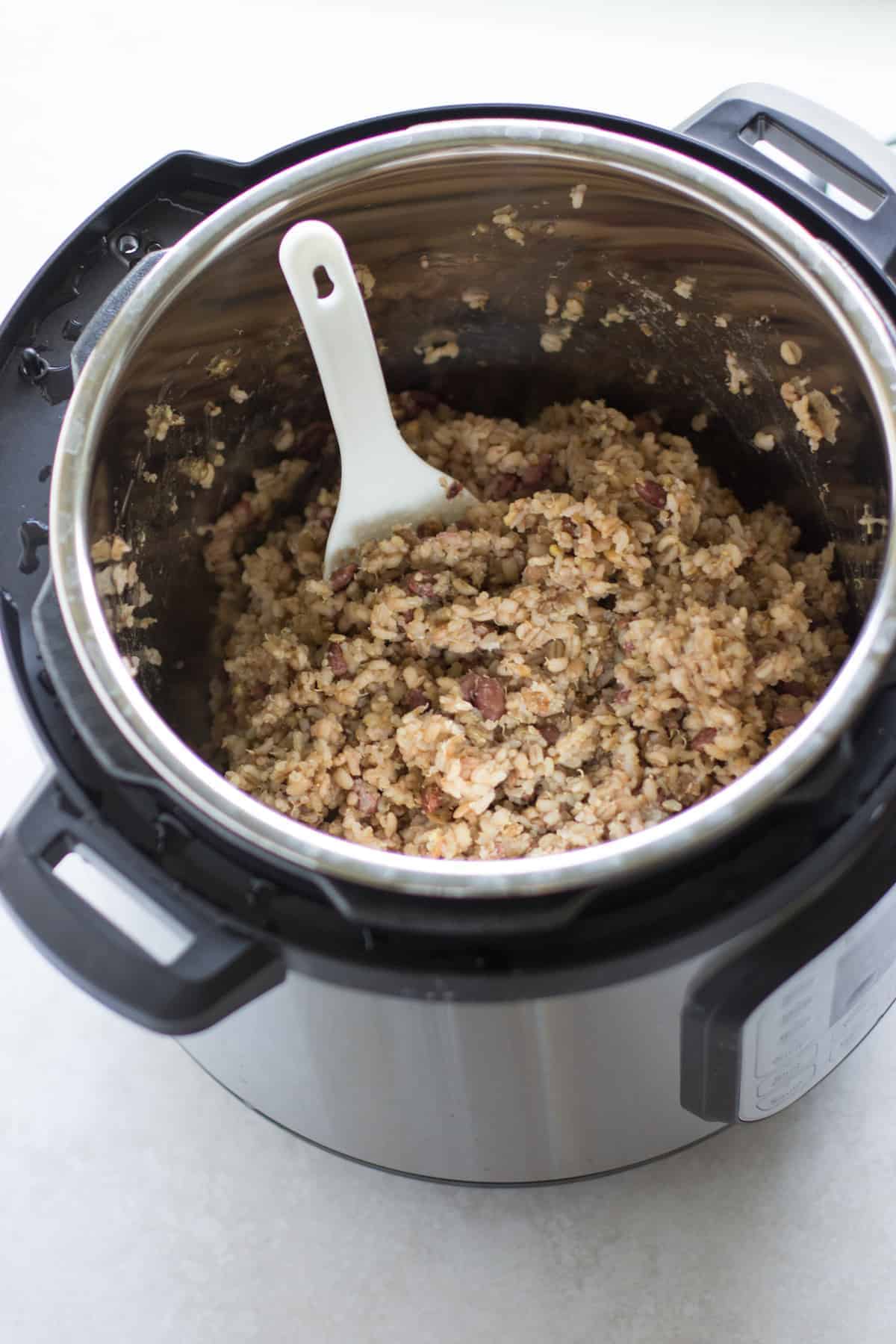
Being Asian, rice is a pantry staple at our house. In fact, in Korea, which is where I was born, it’s not uncommon for people to eat rice for breakfast, lunch, and dinner. There’s even a saying that we live by rice power, “밥심으로 산다.”
In many countries, rice is not just a food. It’s life. It’s deeply rooted in culture, economy, and environment in so many parts of the world! Where I’m from, a meal is not considered complete without rice.
Why am I saying all this?
Rice and Arsenic
As a registered dietitian specializing in baby and child nutrition, I’m very much aware of the fear surrounding arsenic in rice that many parents face.
According to a recent report, 95% of baby foods are contaminated with one or more toxic heavy metals. These include lead, arsenic, mercury, and cadmium. This is concerning as these toxins are neurotoxic and can negatively affect the growth of the baby’s brain during this critical time of development.
No wonder parents are panicked and can’t help but question every single piece of food they put into their little one’s mouth! But keep reading because I’m here to help keep your sanity and confidence in feeding your child.
The Top Offenders
- rice-based cereals and snacks
- juices
- sweet potatoes
- carrots
The report also revealed that whether the food is store-bought, homemade, organic or conventional, they all contained heavy metals. That’s because they are found in the food supply regardless and organic food standards don’t cover these heavy metals.
Heavy metals are everywhere. They are found in the environment through pesticides, pollution but are also naturally found in air, soil, and water.
Ways to Reduce Exposure
So what are we to do?!
First, here’s what I encourage you to take away from this report. It’s good to have this information in the back of our minds, but don’t be overly concerned! Instead, focus your efforts on providing a varied diet.
- Enjoy a wide VARIETY of foods! This is ALWAYS the answer because the truth is, these kinds of reports are just going to keep coming. Today rice. Tomorrow, who knows! The best thing we can do is focus on balance and moderation. So rather than eating just rice, invite other grains (e.g. oats, barley, farro, quinoa, etc.) and produce to your table. This multigrain rice is such an easy way to do just that!
- It’s also a great idea to vary the food sources as heavy metals in the environment vary across the US and around the world. A better rice choice: white basmati rice from California, India, Pakistan, and sushi rice from the U.S were found to have on average, half as much arsenic as most other types.
- Note that brown rice has higher levels of arsenic.
- Check your water as heavy metals sometimes seep into well water, not to mention older pipes may have been made with lead.
Iron
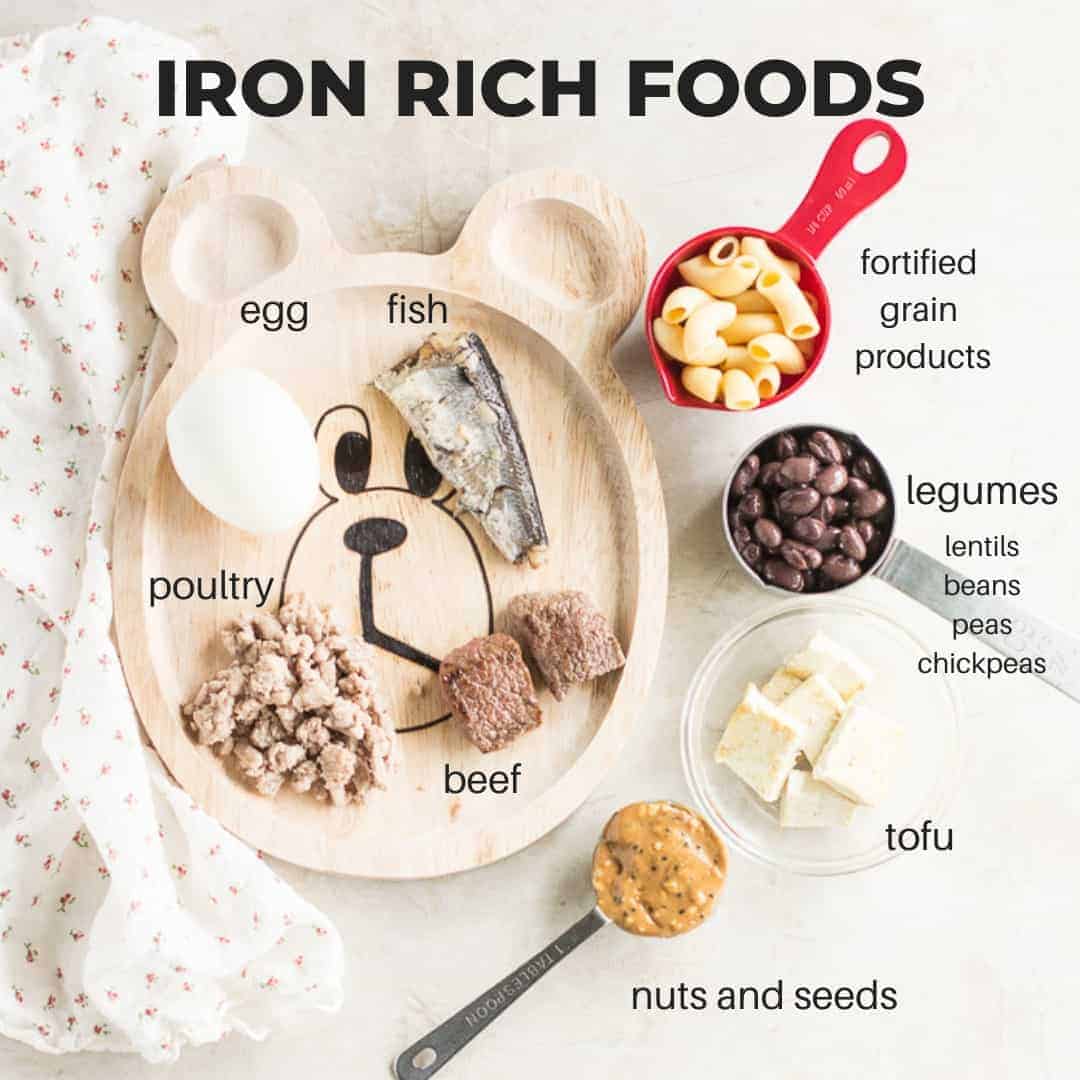
You were probably advised to start your baby or iron-fortified rice cereal. That’s because Iron is VERY important for babies especially.
However, instead of relying heavily on the rice cereals, serve those you see in the image above. Some fruits and veggies, like leafy greens, broccoli, prunes are good sources too. Be sure to pair them with vitamin C to help with absorption. Again, focus on VARIETY.
Enter this Instant Pot Korean Multigrain Rice!
Ingredients for Multigrain Rice
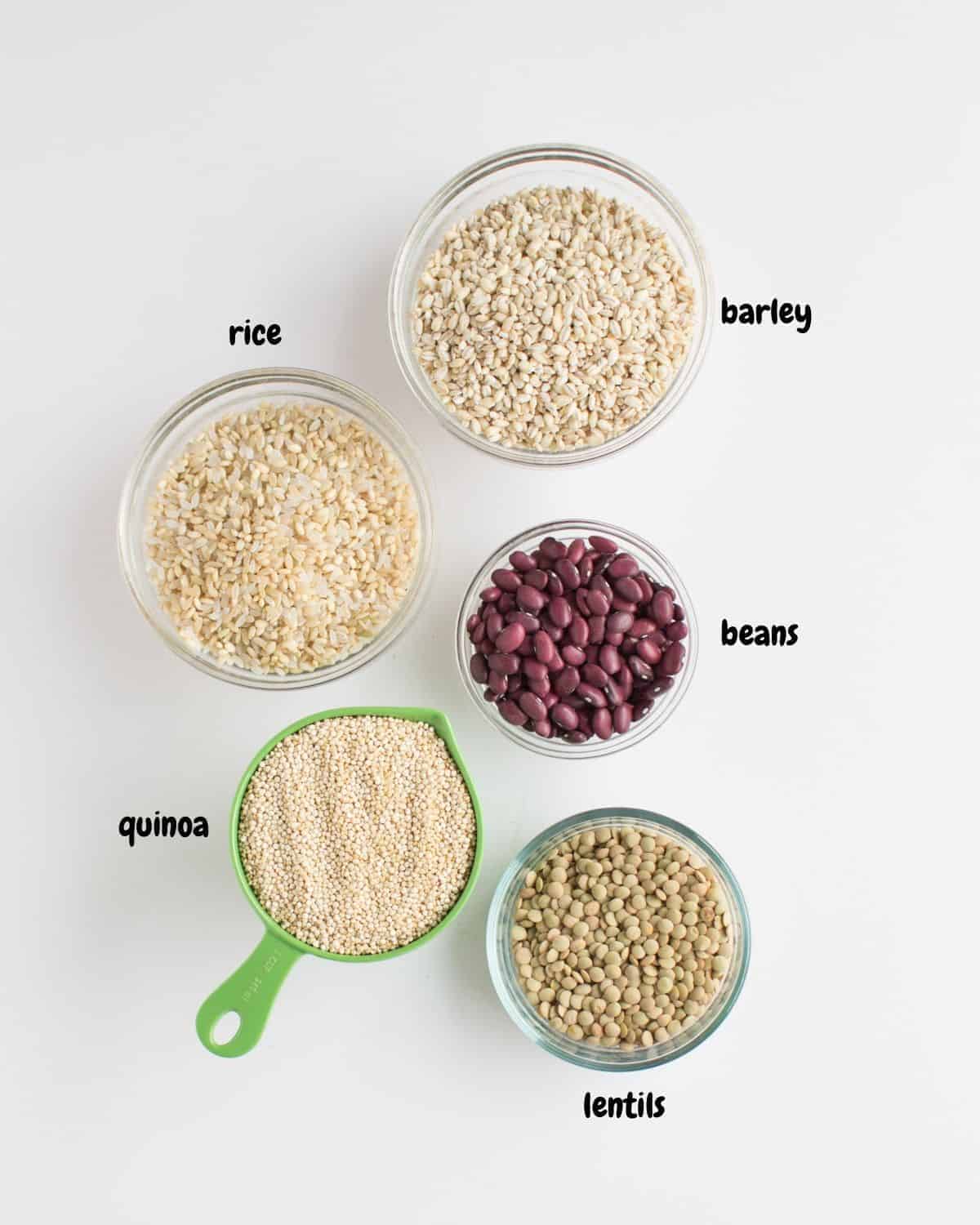
This is such an easy way to invite variety into your family’s diet! After 30+ variations on the ratio of ingredients, amount of water, cooking time, etc., I’m feeling super happy and relieved to finally share this recipe with you!
Expert Tips
- You don’t need to soak the grains and lentils, but I do recommend soaking the beans for at least 4 hours.
- The two beans I recommend are black beans or small red beans (not kidney). If you want a more moist and softer texture (which is what I recommend for babies especially), use the black beans.
- White rice is most recommended as its softer and chewier in texture.
- Rinse grains by rubbing with hands. Repeat 2-3 times and drain. If you don’t have this tool, trust me. You NEED it!
- You can, no you should totally freeze leftovers. Will def come in handy on busy weeknights.
- I recommend using the natural release pressure for this. If you do a quick pressure release, the mixture will be chewier, which makes it difficult for babies to work through.
Serving Suggestions
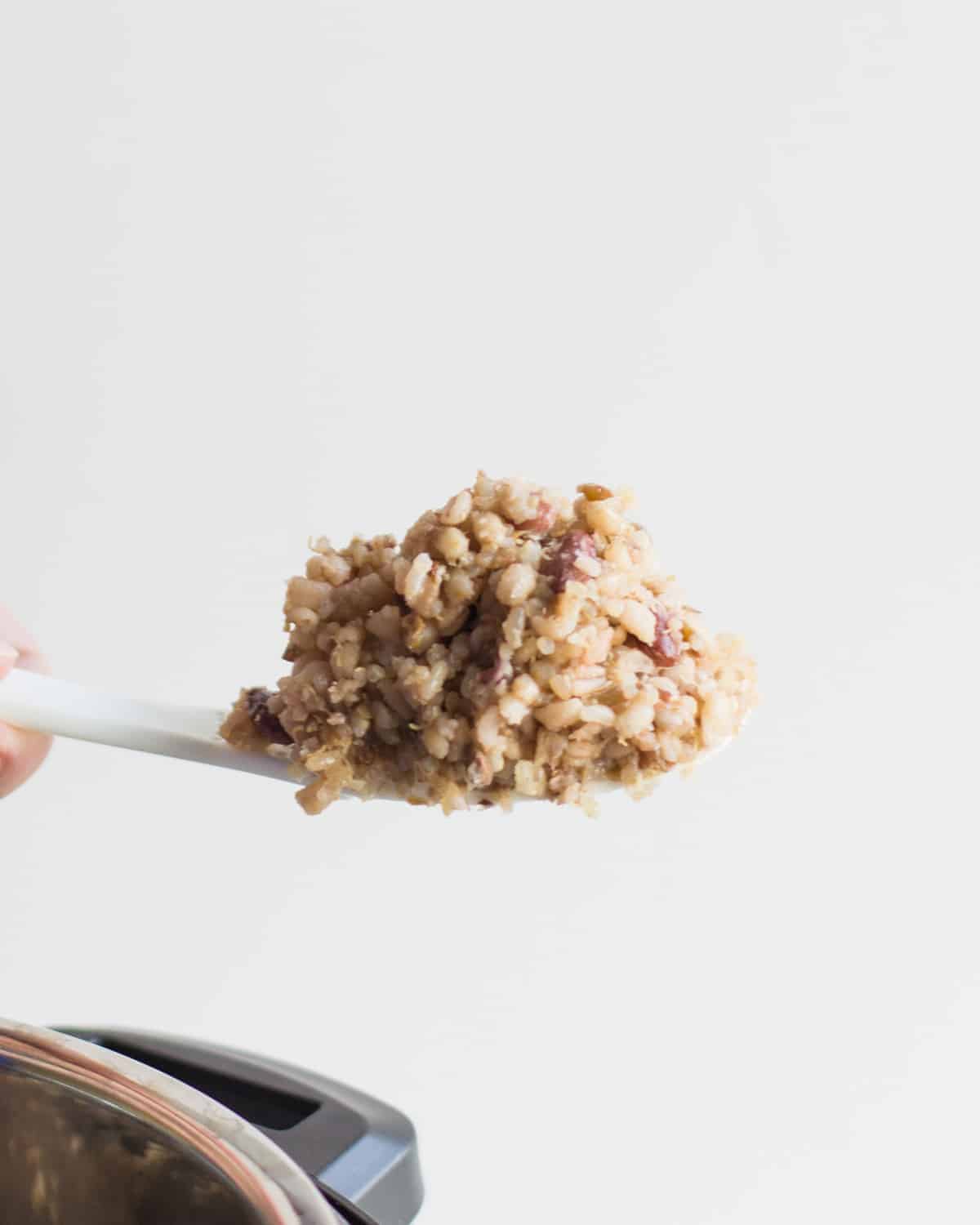
Enjoy this multigrain rice with:
- Moo Goo Gai Pan
- Easy baked shrimp cakes
- Healthy Sweet and Sour Meatball Stir-Fry
- Baby-Friendly korean Bulgogi
- Bibimbap with Beet Sauce
- Instant Pot Korean Chicken and Potatoes
- Non Spicy Korean Tofu Soup
- Instant Pot Peanut Chicken and Broccoli
Did you make this recipe? Leave a rating below and let me know how you liked the recipe! Your feedback means so much to me!

Instant Pot Mixed Grains Rice
Ingredients
- 1 1/2 cup (250g) whole barley
- 1 cup (200g) white rice (see note)
- 1/2 cup (100g) quinoa
- 1/2 cup (100g) green lentils
- 1/2 cup (100g) dried beans, black beans preferred (see note), , soaked for at least 4 hours
- 4 1/2 cups water
Instructions
- Wash grains and lentils by rinsing and rubbing between your hands in water. Drain and repeat 2-3 times. Drain and discard water.
- To the Instant pot, add all the ingredients
- Add 4 1/2 cups of water to the pot.
- Close the lid, make sure the pressure valve is in the sealing position, and cook on high pressure 20 minutes.
- Allow to naturally release until pressure subsides, or wait at least 20 minutes before doing a quick release
- Once done, give the rice a REALLY good mix! Enjoy!

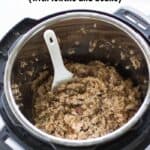













Can I leave lentils out? My child is allergic
Hello! I LOVE all of the recipes I’ve tried on your website! THANK YOU!
Is whole barley the same as hulless barley?
Oh this makes me so happy! Thank you for being here!! No they are not hulless barley or pearl barley has the outside husk removed. But you can use it for this!